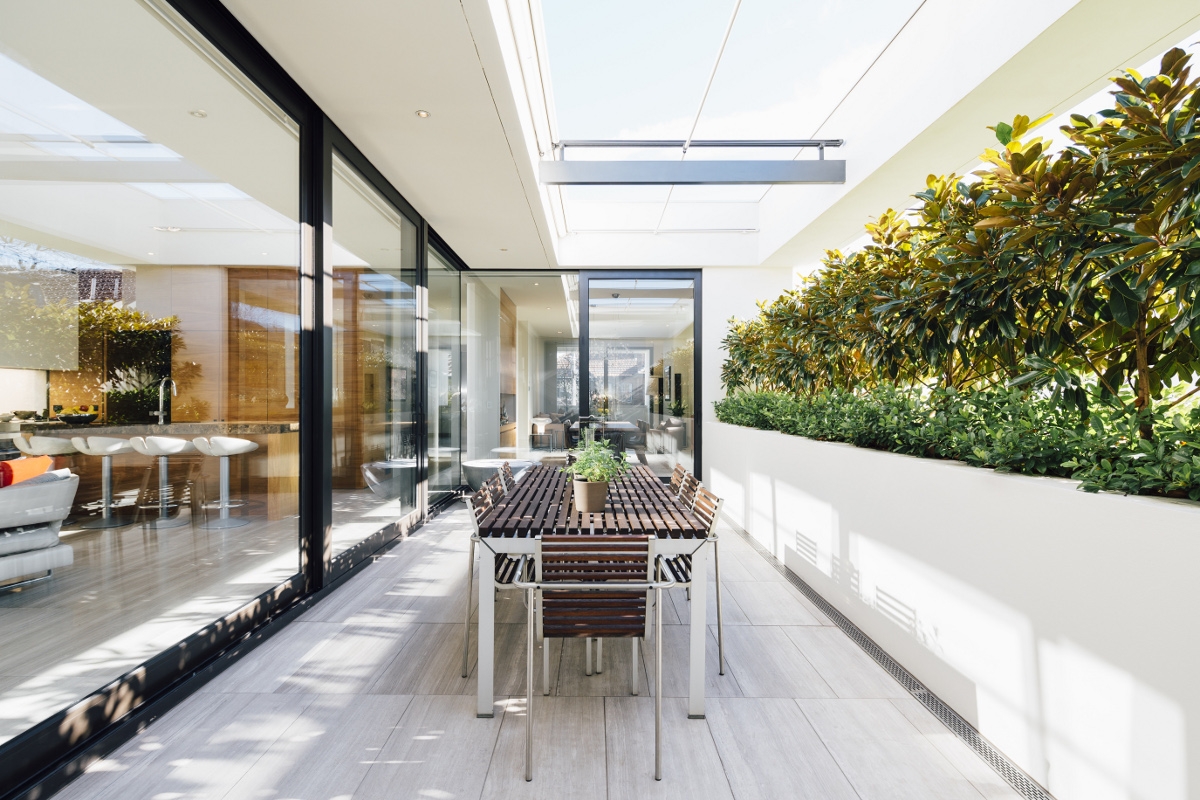Low E Glass Explained
Low E coated glass has been a game changer for creating better performing homes and spaces, however there are some misconceptions when it comes to this glass. Here we explain what Low E glass is, how it works and outline important considerations to support glass selection.
You may think a piece of glass is just a piece of glass, but glass has evolved to be so much more than something that keeps the rain out. People often look through glass rather than at it, and don’t offer it too much consideration. Our homes are demanding more energy efficient building materials, and ordinary glass simply doesn’t cut it.
Low E coating technology is not new, in fact Viridian has been selling these glass types for more than 15 years. Low E glass has enabled the glass industry to innovate and develop products which make our homes and buildings comfortable, energy efficient and natural light filled.
Low E coated glass is a robust and quality product, but to keep it at its best it needs to be specified, installed and cared for in a specific way to maintain its performance and longevity.
What is Low E coating?
Low E means ‘Low Emissivity’ – emissivity is defined as the amount of radiation emitted or absorbed from a surface.
The main difference between a Low E glass and an ordinary glass is that Low E glass has a very thin coating applied to one side of the glass. This enables a reduction in the transport of heat or cold through the glass. Think of it as an invisible insulation barrier for your windows.
Just as wall and ceiling insulation provides protection to those areas, Low E glass does the same for glass. Coated glass helps provide a more comfortable temperature in a room, more window area can be used as an added bonus, and heating and cooling costs are reduced. Combining better insulated products into our homes makes sense and contributes to reducing greenhouse emissions.
There are two types of Low E coatings – Hard Coat Low E and Soft Coat Low E.
Hard Coat Low E
A hard-coat Low E glass is a version of the coating which is applied to the glass when it is just coming out of the furnace. The coating is fused onto the glass as it cools down.
Considerations for hard coat Low E glasses include:
The coated side of the glass must be installed to the interior of the building to protect the coating – window installers and glaziers will know this and should ensure the glass is glazed into the building or frame accordingly.
The glass does not clean like ordinary standard glass without a coating, we have cleaning instructions on our website with more information.
All glass is produced as a finished product and can be prone to construction damage, Low E glass is no different. So, it must be protected once fabricated, transported and installed on site.
In certain daylight conditions, a phenomenon called haze may be visible – this is a characteristic of the coating’s interaction with the light and not an issue with the glass. Find out more about this in our technical paper here.
EnergyTech™, SmartGlass™ and ComfortPlus™ are examples of a hard-coated Low E glass.
Soft Coat Low E
A Soft Coat Low E is when the coating is applied to the glass after it has gone through the float line process and has cooled down. Soft coated glass must be enclosed within a double-glazed unit for longevity and added performance.
Considerations for soft coat Low E glasses include:
As this product needs to be enclosed in a double-glazed unit you get a better performing product. So, you can have bigger windows with more energy efficient outcomes.
Double glazing cleans like ordinary glass because the coating is enclosed within the unit.
Double glazed units do need to be installed a certain way to support their performance, your window installer or glazier should ensure this when building your windows.
Soft coats do not have the haze characteristics hard coats do, so if this is a concern it’s worth considering for your project.
Viridian’s three soft coat Low E double glazing products available in the range, these are Viridian ClimaTech™, LightBridge™ and LightBridge next™. These are our highest performing products in the range. Download the brochure which compares these products here.
Speak with your glazier or window installer about the glass going into your window frames to ensure you understand the choice you are making. Not only for performance, but also for your lifestyle and maintenance habits.
Glass gives you the opportunity to get much more out of your home than you may think – so make glass choice a priority alongside your colours, appliances and design finishes.
